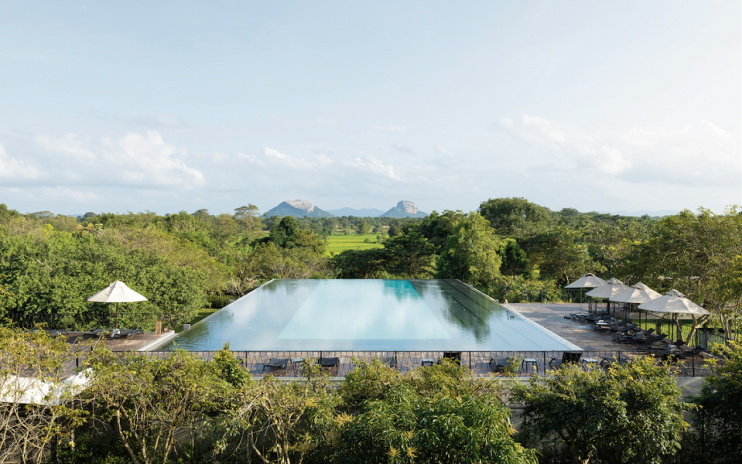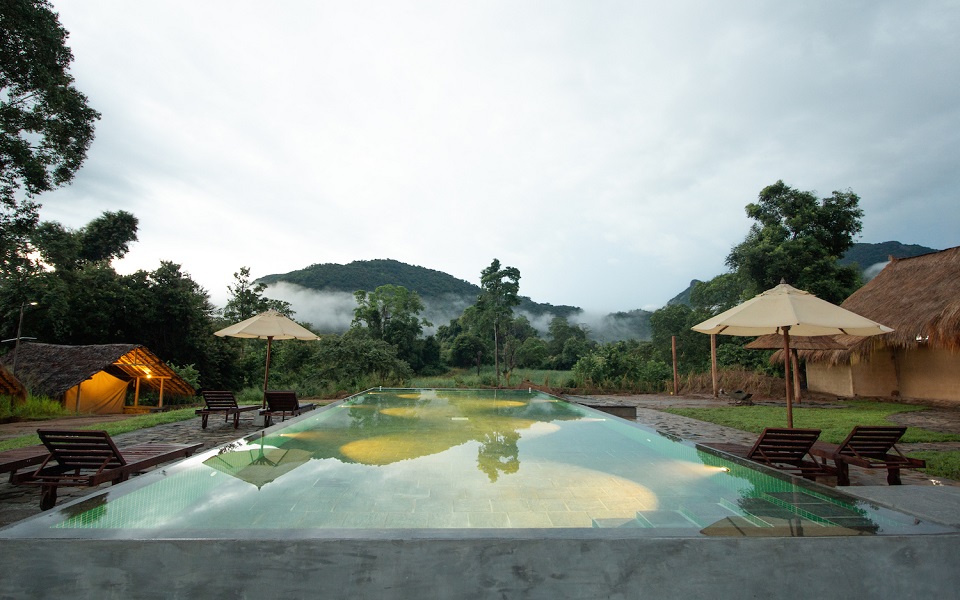Why now is the best time to visit wild, untamed Sri Lanka

It has been a tough few years for Sri Lanka but Steve Dinneen finds a country that’s ready to welcome tourists
The last few years have been devastating for tourism-reliant countries across the world, but few have had it quite as bad as Sri Lanka. Visitor numbers fell to virtually zero following the 2019 Easter bombings, which were followed in short order by the onset of Covid. Then, just as light seemed to be visible at the end of the tunnel, last year’s economic collapse led to petrol shortages across the country – rationing was still in place until recently – and widespread protests.
For the third time in as many years, the UK government advised against non-essential travel. That advice was lifted months ago and relatively low tourist numbers make this a great time to visit this astonishingly diverse island, a place where you can go from mountaintop tea plantations to dense jungle to coral beaches within the space of a few hours.
Over 12-days I stayed at five properties operated by Thema Collection, which owns a dozen luxury hotels across the country. If you imagine Sri Lanka as a teardrop falling from north to south, I made a circuit around the widest part of the drop, from the airport in the west, up and over the mountainous centre, down to the coral beaches of the east coast before looping back via some ancient ruins.

First up, a public service announcement. This isn’t a small country and any trip will involve hundreds of road miles; unless you’re a rally driver or a psychopath, this is not something you should attempt yourself. The hotel group organised for us a guide/driver, Sam, who stayed with us for the whole trip, picking us up at the airport and bunking in with the hotel staff at each destination.
I really can’t overstate how necessary this is: Sam was a one-stop-shop for everything from historical information to translation services to bartering advice. Watching him gracefully swerve around the island’s wild dogs (population: three million) that like to warm themselves on the tarmac, or negotiate a 45 degree, single-track mountain road in his 10-year-old rented Honda, leaves me in no doubt that this was money well spent.
Sri Lanka is a complicated country, having been passed around by various colonial powers, starting with the Portuguese who laid claim to it at the end of the 16th century, then the Dutch, who took control until the cusp of the 19th century, followed, inevitably, by the British, who finally gave it back in 1948. Our first destination underlined this colonial history so neatly it almost felt too on the nose: Mountbatten Bungalow, formerly home to Lord Mountbatten. It’s a beautiful, century-old colonial-style house overlooking Kandy, the religious capital of the country and perhaps its most beautiful city. You enter through perfectly-manicured gardens into a cool, wood-panelled room, where Louis Mountbatten and his wife peer down from their portraits on the wall. There are a handful of rooms in the main house, all with four-poster beds, and a series of wooden cabins dotted beneath the trees in the garden. I stayed in a cabin, and being woken on my first morning by macaques dashing across the roof felt like a pretty good introduction to Sri Lanka.

Kandy is one of those destinations that features on every trip here, a beautiful old (yes) colonial town with a huge artificial lake at its centre. Here you can find the Dalada Maligawa, also known as the Temple of the Sacred Tooth, which is said to house a molar from the Buddha himself. Several times a day the special room where the casket is held is opened while monks bang drums and chant; while I was there several hundred school children wearing adorable little cricket vests milled about carrying flowers to leave in offering. There’s an element of culture shock when you arrive in Sri Lanka – not as intense as touching down in Delhi or Bangkok, maybe, but Sri Lankan cities have that same densely-packed air of organised chaos: shops selling sandals and egg hoppers and spools of fabric stacked on top of other shops, all seemingly held together by sheer force of will. A hundred unfamiliar smells coagulating in your nostrils. Sounds come at you from every direction.
The spaces in between towns, meanwhile, are an endlessly repeating wallpaper of verdant green, paddy fields and stalls selling fruit and veg. As you head into the mountains, tea plantations are added into the mix, another legacy of British rule. Getting to the mountains involves driving up some frankly terrifying roads, and I’m surprised cars aren’t tumbling off left, right and centre. Sam seemed unfazed, more concerned about dents to the Honda than careening to his fiery doom.
We learned how to cook crab curry, snorkelled at dawn to spot lionfish, ate on the beach beneath palm leaves
Far above sea level you can find the interestingly named Tea & Experience Factory, a hotel housed in a converted tea factory, located within a 3,000 acre working plantation. Like Mountbatten Bungalow, you can feel the history of the place, with its corrugated iron roof and its pieces of industrial machinery lying around. You’re invited to head into the plantation with a basket to pluck some leaves of your own. Only the top two or three shoots are used in tea-making, with the same plants being constantly harvested. You also can arrange for a guide to take you on a brisk walk through the local villages, places of extreme poverty built upon some of the most breathtaking scenery you can imagine, ending at a waterfall that will make your friends jealous when you inevitably post the picture on Instagram.
Back at the hotel, you can take your leaves to the titular factory, where various pieces of ancient-looking, Rube Goldberg-esque machinery roast and shred and shake them into something recognisable as tea. The food here nods to the colonial history of the building, an unusual combination of British and Sri Lankan dishes, with fish curry and poppadoms sitting alongside chicken sandwiches and tomato soup. There are beautiful gardens and a pool, too; perfect for enjoying a cold beer as the sun sets. On our second night there was a huge storm, thunder crashing overhead and rain drumming on the metal roof, which was just about as romantic as it gets.
After a night in the absurdly luxurious room, which had its own pool, we woke early to climb Sigiriya, a strenuous hike past disturbing signs warning of hornet attacks, culminating in the ruins of an ancient palace
The diversity of this country was really drilled home by my next change of scenery, descending from the mountains (still terrifying), racing past more paddy fields and fruit sellers and towns made up of shops stacked upon other shops, and ending up, three hours later, in the dense jungle of the Gal Oya national park. Wild Glamping Gal Oya is a safari-style collection of luxury tents built around acres of farmland, surrounded by dense jungle; electric fences hint at some of the more serious wildlife that lurks beyond: elephants, leopards, sloth bears (don’t let the name fool you – these relatively small creatures are, by some metrics, the most deadly members of the ursus family).
The canvas palaces found at Wild Glamping Gal Oya are to tents what the Ritz is to a Travelodge; each night elaborate towel animals and petal hearts would be left on the vast bed, while out the back there’s a cascade shower and a vanity sink. It also has an excellent chef serving traditional Sri Lankan curries. Gal Oya works with the indigenous Vedda tribe that have lived in these ancient forests since before the 6th century BC, although their way of life is being threatened by the rampant march of modernity.
A village elder called Gunasiri took us on a walk through the jungle – technically a semipermanent wet forest – pointing out mimosa that shrink away underfoot, giant orb web spiders suspended between the trees overhead, and the dung of a sloth bear. We waded through streams and clambered over huge, sinewy vines, eventually arriving at a rocky clearing filled with butterflies. Gal Oya national park is also home to Sri Lanka’s largest lake, Senanayake Samudra, and this is the best place to spot elephants.
Jumping into a small motorboat we buzzed off into a surreal landscape; the lake was made when the Gal Oya river was dammed, flooding a huge plain. Evidence of that still remains in the skeletal fingers of trees that poke through the murky water. After visiting islands populated by thousands of cormorants and a few unlucky families of stranded monkeys, we saw our first elephant, a lone male cooling himself by tossing soil over his back.
Over the next couple of hours we spotted three or four more, all standing nonchalantly a few metres from the water. We also spotted a crocodile, which allowed us to drift within a few feet of it before thrashing its tail, almost causing me to drop my camera in the lake. En route to the next destination, the Pasikudah seaside resort, we took a detour to check out the Rajagala Temple, which turned out to be a vast network of archaeological sites, ranging from perfectly preserved burial chambers to clifftop monasteries dug into the walls of the mountain and covered with symbols written in a forgotten language.
We trekked for hours, over boulders, through caves, across clearings filled with the ruins of ancient watergardens and meeting halls and refectories. We’re talking real Indiana Jones stuff here, a place every bit as impressive as its Mexican or Cambodian equivalent. In all that time we saw perhaps three other people. Maalu Maalu Resort in Pasikuda is a more recognisably “international” hotel. Big pool, open-air restaurants, white sand beaches. All that good stuff. Here we learned how to cook crab curry, snorkelled at dawn to spot lionfish, ate a romantic meal on the beach beneath palm leaves pulled into the shape of a heart.
And before I knew it – fruit stands, wild dogs, paddy fields – we were at our final destination, pulling through the vast gates of Aliya, the most impressive resort of them all. From the open front of the reception area, beyond the huge pool, lies Sigiriya, also known as Lion Rock, one of Sri Lanka’s most iconic sights. After a night in the absurdly luxurious room, which had its own pool, kitchen and sauna, we woke early to climb Sigiriya, a strenuous hike (past some disturbing signs warning of hornet attacks) culminating in the ruins of an ancient palace, complete with a 1,500-year-old rooftop swimming pool, making this a kind of Unesco Heritage Soho House.
Waiting for us at the top, of course, were some wild dogs lounging on the rocks. You would expect queues of people waiting to see somewhere as beautiful as this but we just breezed through. It’s a sign of how tough things have been in Sri Lanka, but you can do your bit by booking now and taking advantage of this relative lull, which is sure to be short-lived.
Visit Sri Lanka yourself
Steve organised his trip through Thema Collection. For prices and to book any of their resorts go to themacollection.com. He flew with SriLankan Airlines, for prices and to book, go to srilankan.com
